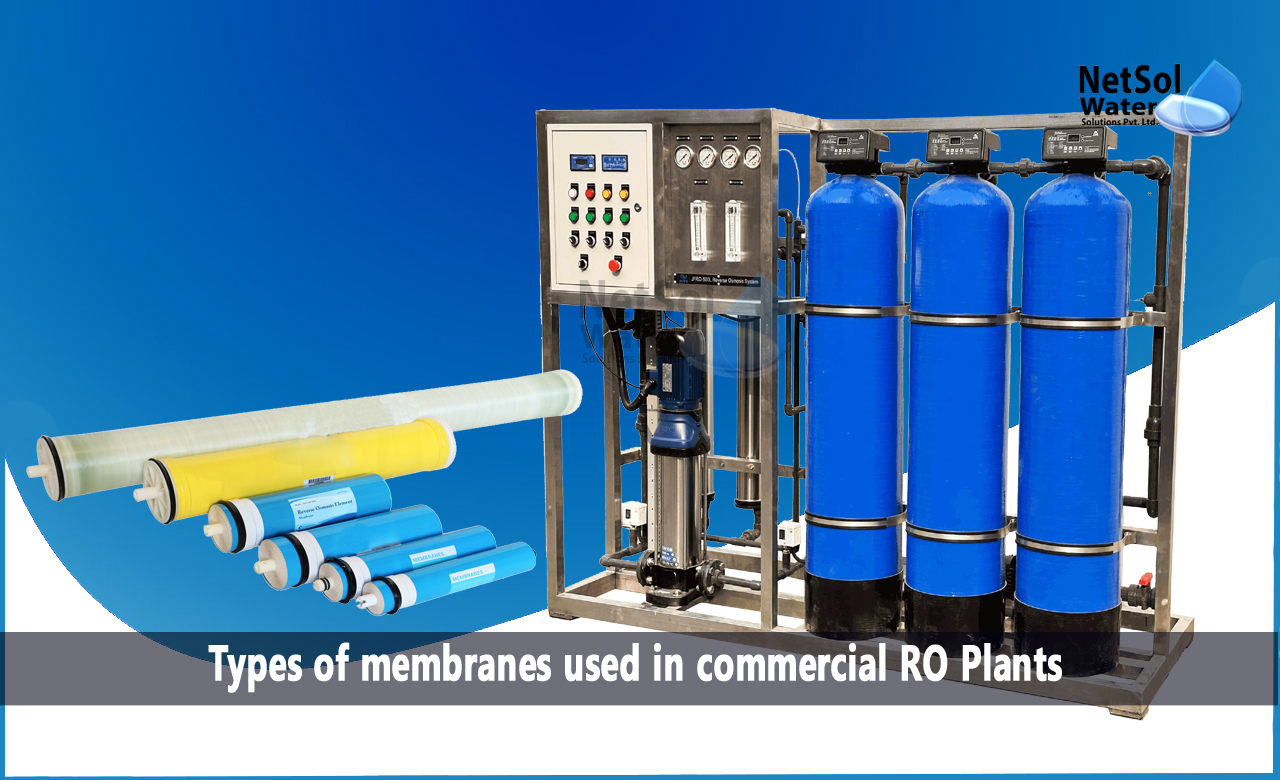How many types of membranes used in commercial RO Plants?
The membrane is an extremely thin plate with incredibly small pores made of synthetic plastic. The kind of membrane used in the water filter determines how big the pores are.
According to the size of the membrane's pores, membranes used in water filters are categorized as
1. Microfiltration membranes (MF),
2. Ultrafiltration membranes (UF),
3. Nanofiltration membranes (NF), and
4. Reverse osmosis membranes (RO).
Let’s understand the types of membranes used in commercial RO Plants.
Commercial RO Plant membranes include:
· Cellulose acetate, and
· An aromatic polyamide membrane. Aromatic polyamides are also known as thin film composite membranes.
1: CTA (Cellulose Triacetate), a membrane made from by-products of paper that is attached to a synthetic layer, uses extremely less chlorine in a water source to inhibit bacterial growth.
2: A TFC (Thin Film Composite) membrane made of synthetic material needs chlorine removed before water enters the membrane, because chlorine causes irreversible damage to a thin film membrane element. These membranes can sustain temperatures higher than cellulose acetate (35°C) and are more resistant.
CTA vs. TFC membranes
Filtration capability and chlorine resistance are the two key distinctions. CTA membranes can withstand chlorine, however, they are prone to bacterial contamination and only remove 93% of common contaminants.
TFC/TFM membranes can only treat water that is chlorine-free but typically remove 98% of common pollutants, and are less prone to organic pollution. Use a carbon pre-treatment filter with a TFC/TFM membrane to purify chlorinated tap water.
The general properties of reverse osmosis (RO) membranes are as follows:
|
|
Parameters |
Cellulose acetate membranes (CAT) |
Cellulose triacetate membranes (CTA) |
Thin film composite membranes (TFC) |
|
1. |
pH |
pH (2 – 8) |
pH (4 – 9) |
(pH 2 – 11) |
|
2. |
Temperature |
5°C - 30°C |
5°C - 35°C |
5°C - 45°C |
|
3. |
Resistance-to bacterial attack |
Poor |
Fair/good |
Excellent |
|
4. |
Resistance-to damage by chlorine |
Fair (0 - 1 ppm) |
Good (0 - 3 ppm) |
Poor (0 - 0.1 ppm) |
|
5. |
Typical rejection of salts at 60 psi |
85% - 92% |
92% - 96% |
94% - 98% |
|
6. |
Typical rejection of nitrate at 60 psi |
30% - 50% |
40% - 60% |
70% - 90% |
|
7. |
Typical-treated water production at 60 psi |
40 l/m2of membrane/day |
40 l/m2of membrane/day |
80 l/m2of membrane/day |
|
8. |
Turbidity allowed in feed water |
None |
None |
None |
|
9. |
Iron allowed in feed water |
1 ppm |
1 ppm |
0.1 ppm |
|
10. |
Relative cost |
Low |
Medium |
High |
By strategically fusing cutting-edge treatment technology with workable solutions, Netsol Water Solutions works with a wide spectrum of international organizations to address the complex issues of RO.
For the commercial RO plant, we can offer the best membranes in addition to a strong foundation for RO plant plumbing connections. To help you choose the solution or combination of solutions that will best meet your needs, you can review the results of your water test with our expert.
Manufacturers of Commercial RO Plants
Netsol Water is Greater Noida-based leading water & wastewater treatment plant manufacturer. We have earned a reputation as the top producers of industrial RO plants, sewage treatment plants, water softening plants, and effluent treatment plants, among other services.
For any help, inquiry, or product purchase-related questions, call +91-9650608473 or send an email to enquiry@netsolwater.com



